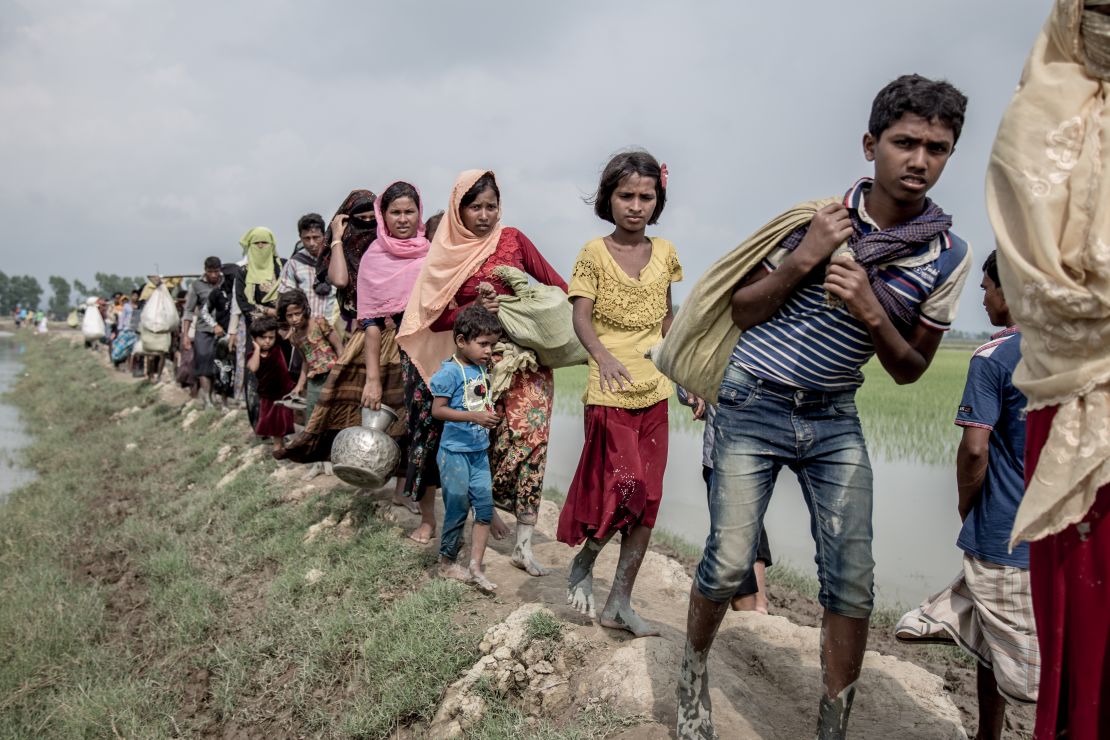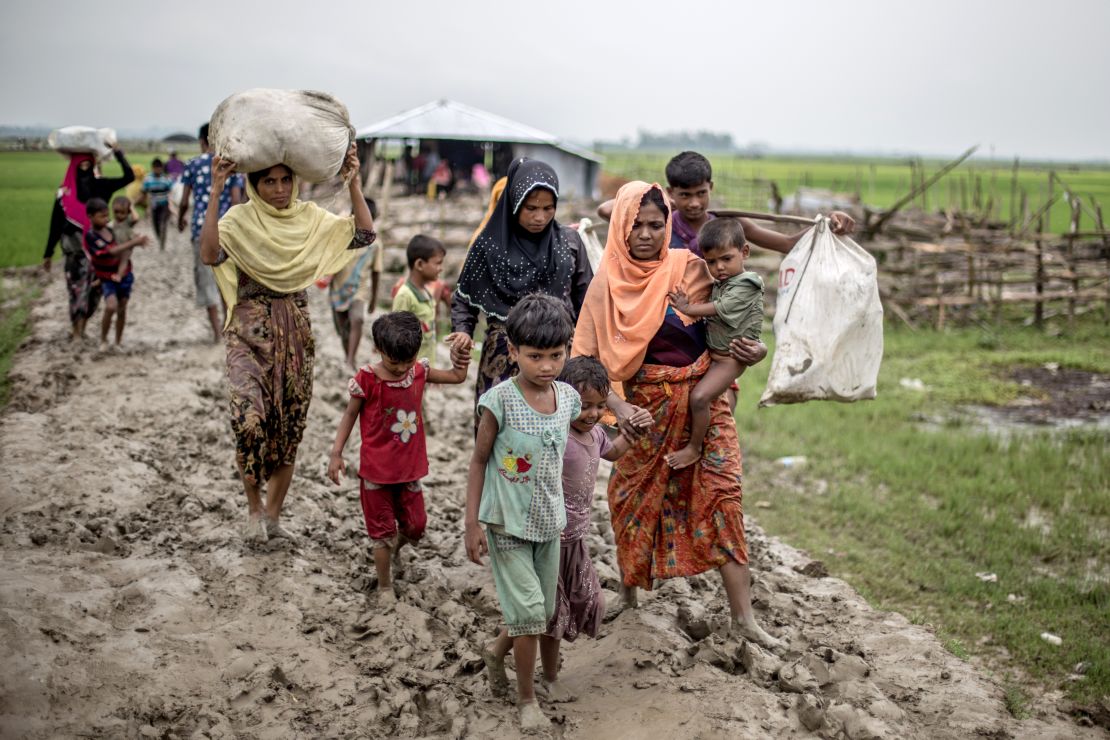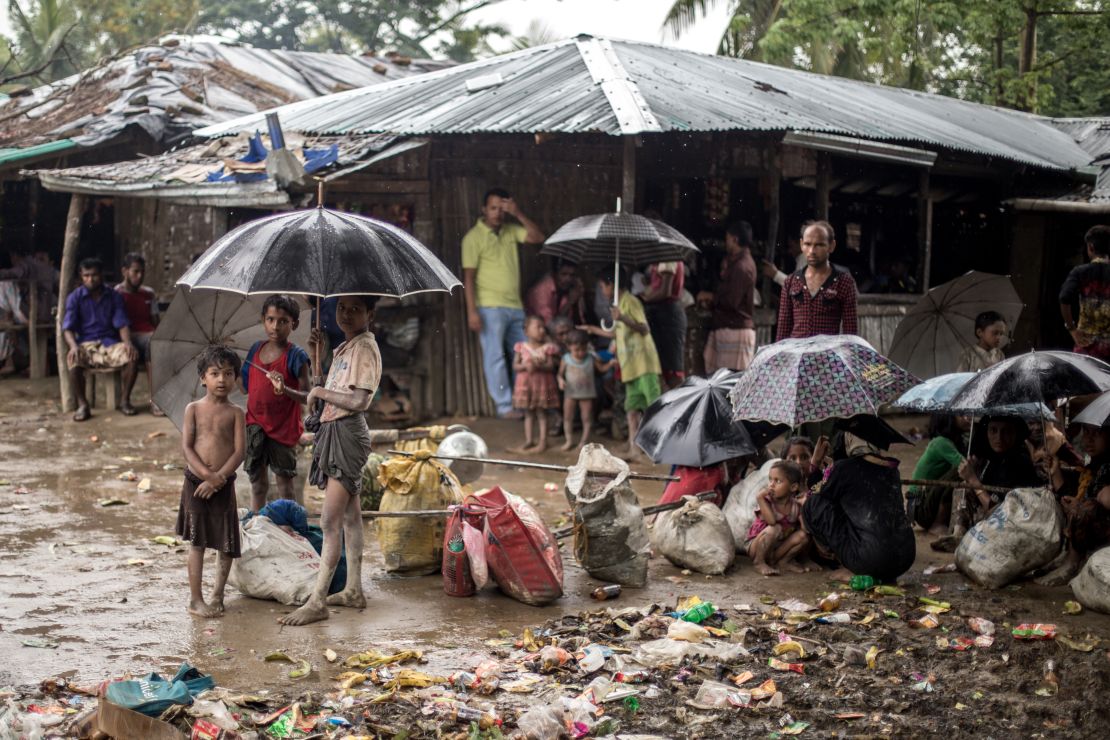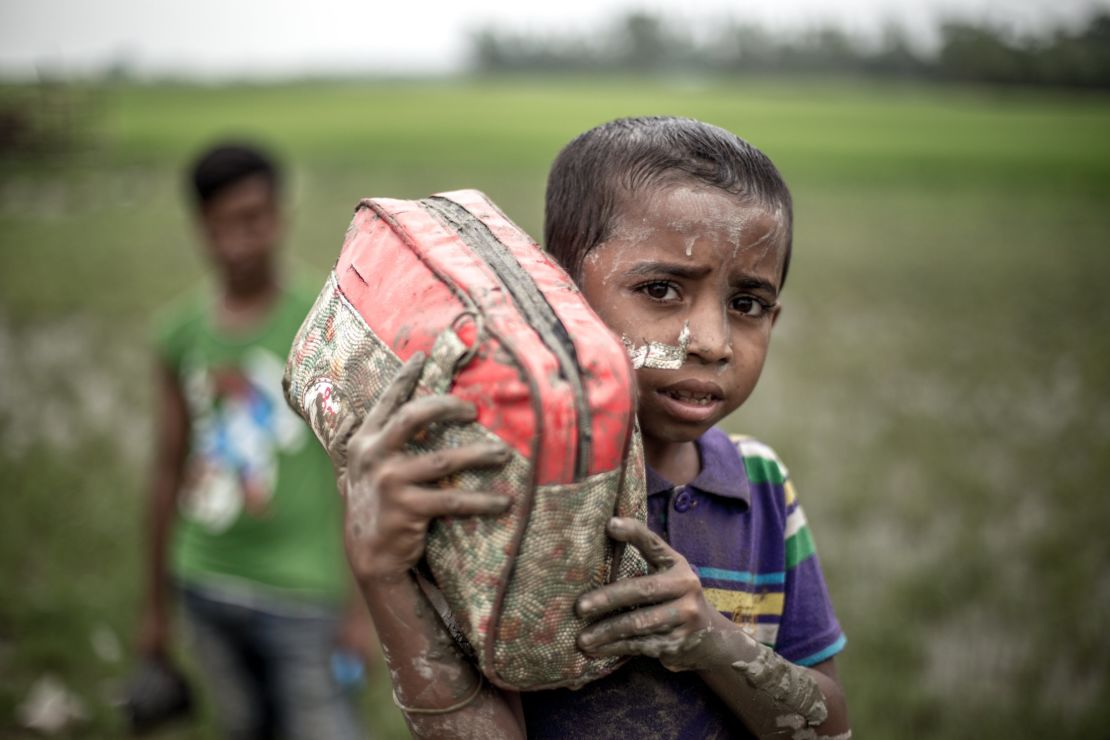The men who came to kill Arafa Khatun were also her neighbors. “The Rakhines and the Hindus, they joined with the military. I watched them coming over the hill, like a team. As they came towards us to attack, I saw faces that I recognized. I knew them, yet they were killing us.”
Khatun has eight children, but since the attack on her village of Shairapara, in Myanmar’s Rakhine State, she can only find one of them, her 16-year-old son. He had been shot in the back and is now receiving treatment.
“It is an ethnic cleansing,” said 50-year-old Khatun, who like her son is a member of Myanmar’s Rohingya Muslim minority. “They massacred only the Rohingya villages. The other villages were left untouched while ours burned to the ground.”
Similar stories are repeated throughout the many hastily constructed refugee settlements in southeastern Bangladesh, where hundreds of thousands of Rohingya refugees like Khatun and her son are now gathered, having been forced to flee their homes and villages across the border in Myanmar.

The United Nations estimates that over 400,000 Rohingya have arrived in Bangladesh since August 24, an average of 16,000 a day. The South Asian country, which is also dealing with the internal displacement of hundreds of thousands of its own citizens due to severe monsoon flooding, has been unable to cope with the sudden influx, leading to fears of imminent food shortages. On Sunday, one woman and two children were killed in a stampede as aid workers handed out relief packages near a refugee camp in Cox’s Bazar.
At a newly established makeshift settlement in Gumdum, itself a spillover from larger preexisting camps located nearby, an estimated 50,000 people, mostly women and young children, huddle together under scraps of tarpaulin and plastic.

Azida Abad arrived at the camp several days ago along with her four young daughters. Her husband had been admitted to a local medical clinic with a high fever. In the cramped and filthy conditions, disease is rife. With the daily monsoon rains, the whole area is flooded and quickly turns to mud.
Abad recognized the militants that stormed into her village and reeled off their names like a class register. “They were in uniform, the military must have given it to them,” she said.
The events that unfurled after August 25, in retaliation to an alleged Rohingya insurgency that left 12 Burmese security officers dead, have been deemed “a textbook example of ethnic cleansing” by UN human rights chief Zeid Raad al-Hussein.
The Myanmar government have denied this, claiming security forces are carrying out counter attacks against “brutal acts of terrorism.”
In a statement released by the Myanmar foreign ministry, it purports the security forces are taking “full measures to avoid collateral damage and the harming of innocent civilians.”
Yet still the violence continues and with it the steady stream of refugees.

Scattered in a panic
Alongside the ongoing exodus of people, the catalog of reported human rights violations is also growing. Sayed Hakim, from Quinr Khali, is certain that his village was specifically targeted by the Burmese military on August 31.
“Helicopters flew overhead, the doors flung open and I looked right at them. They were Myanmar military, I saw their uniforms,” he recalled, while sat inside the Chittagong District Hospital in Bangladesh, where he was waiting for his father who was undergoing surgery. “First they shot at us with rocket launchers, then guns. Then they dropped bombs.”
The villagers scattered in a panic. Hakim’s elderly father, Kalim, tried to run with his wife. But at 75-years-old, he was unable to keep up.
Other villagers told Hakim that his father had been hit. So he and his brother turned and ran back to the burning village to rescue him. “He was unconscious when we found him, and there was so much blood.”
Hakim and his brother took turns to carry their father to the border with Bangladesh, where he was admitted to hospital. Nurses caring for him confirmed his injuries are consistent with a blast trauma. He had shrapnel wounds and burns on his legs, and his hip was dislocated by force.

Prior to the current wave of violence, Myanmar’s population of Rohingya was estimated to number about one million, with the majority clustered in small, often isolated, villages in the northern part of Rakhine state along the border with Bangladesh and India. More than a third have now sought refuge in Bangladesh, many repeating the same claims that the attacks were part of a coordinated strategic operation.
On Thursday, human rights group Amnesty International released analysis of active fire-detection data, satellite imagery, photographs and videos from Myanmar, that they insist offers irrefutable evidence of a government-backed “scorched-earth policy” intended to rid the country of its minority Rohingya population.
“There is a clear and systematic pattern of abuse here,” said Tirana Hassan, Amnesty International’s Crisis Response Director. “In legal terms, these are crimes against humanity – systematic attacks and forcible deportation of civilians.”
Friends turn on friends
In the village of Tula Toli, close to the border with Bangladesh on the Myanmar side, members of different ethnic groups had lived side by side for generations.
Aware of stories of violence emanating from other villages, Tula Toli’s community leaders had moved to reassure Rohingya families that they were safe and that no harm would come to them.
The very next day, several of those leaders were allegedly seen armed alongside the military.

“I watched as the government landed in helicopters in Tula Toli and distributed arms,” said Omar Ali, as he crouched beneath a sheet of tarpaulin alongside his wife and twin baby girls in the makeshift refugee settlement of Bhalukhali.
“They distributed arms to the Mughs, the Hindus, the Buddhists and to the Murongs, everyone,” he continued. “We watched helicopters landing and then the weapons being given out. They suddenly had everything; uniforms, knives, guns, everything.”
One cluster of men receiving the arms stood out in particular to Ali. They were his family friends, of Rakhine Mugh ethnicity.
“I saw these friends of mine put on uniforms and holding weapons. We used to be childhood playmates.”
His village of Whykhong on the opposite side of the river bank gave him a vantage point. Some men from his village went closer to film the events on their phones, and were shot at.

“Once everything was distributed, they started the operation.” Ali could only watch helplessly on the riverbank as members of the nearby village, fearing death, began to flee into the rice paddies and towards the water as the militants started setting fire to their houses.
“The women and children hid in the paddy field by the river bank. But when the militants saw people in the paddy field, they started to shoot at them, killing them this time.”
“You could hear the children crying,” recalled Ali. “There were so many bodies in the water, they were floating down the river like pieces of wood.”
The Myanmar government has not responded to CNN’s repeated requests for comment regarding these allegations of atrocities, or that the military provided arms and instructions to non-military groups.
For many of the refugees, there is no doubt that they were targeted because of their ethnicity.
“It was the non-Muslims that did this. They conspired against us,” said Rabiya, who went by only one name. In her former village of Nayapara in Maungdaw, a prominent member of the local ethnically Rakhine community had uttered a fateful warning in the weeks leading up to the attack.
“He got very angry and threatened us,” Rabiya continued, “He told us that soon, he was going to finish us all.”
Editor’s note: Names have been changed to protect the safety of individuals interviewed.
